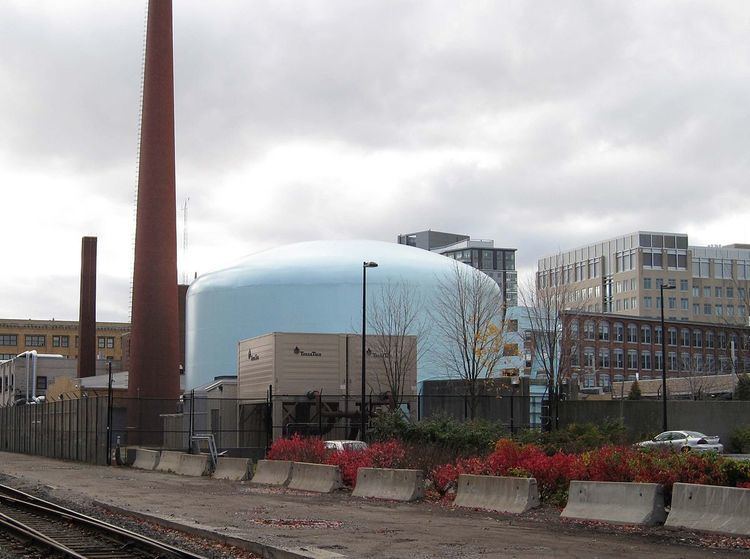Type tank Construction Cost $3 million USD Staff 36 | Power 6 MW (thermal) First Criticality 1958 July Construction began June 1956 | |
 | ||
Operating Institution Similar Synapse Energy Economic, Exelon, Harvard University, Suffolk University Sawyer B, MIT Sloan School of Manage | ||
The MIT Nuclear Research Reactor (MITR) serves the research purposes of the Massachusetts Institute of Technology. It is a tank-type 6 MW reactor that is moderated and cooled by light water and uses heavy water as a reflector. It is the second largest university based research reactor in the U.S. (after the University of Missouri Research Reactor Center) and has been in operation since 1958. It is the fourth-oldest operating reactor in the country.
Contents
Technical specifications
The MITR-II design uses finned plate-type fuel arranged in a hexagonal pattern of rhomboid fuel assemblies. Power is controlled by 6 manual boron-stainless steel blade-type control rods and one aluminum with cadmium control rod which can be placed on automatic control. Light water flows upwards through the core and a tank of heavy water surrounds the core. A wall of dense concrete that serves as shielding surrounds the tank of heavy water. The maximum coolant temperature is 55 degrees Celsius. The light water and heavy water are cooled using forced circulation through heat exchangers to a secondary coolant system. The heat from the reactor is ultimately dissipated to the atmosphere via the secondary cooling system using two modular Tower Tech cooling towers - model TTXL-081950;.
The reactor uses highly enriched uranium fuel, in the form of uranium-aluminum cermet with aluminum cladding.
Refueling takes place 3 to 4 times every year. A single refueling consists of rearranging the assemblies in the core or a combination of rearranging and replacement of old assemblies with new ones. This is more frequent than both nuclear power plants, which may go 17 to 23 months between refueling outages when they rearrange the entire core and replace 1/3 to 1/2 of the core, and most research reactors (particularly university reactors), many of which go decades without refueling due to the high energy density of nuclear fuel and infrequent use at high power levels.
Uses
The MITR research program encompasses most aspects of neutron science and engineering including nuclear medicine. Some of these activities are:
The MITR is one of only six facilities in the world to be engaged in patient trials for the use of boron neutron capture therapy (BNCT) to treat both brain tumors and skin cancer. The MITR fission converter beam is the first to be designed for BNCT.
